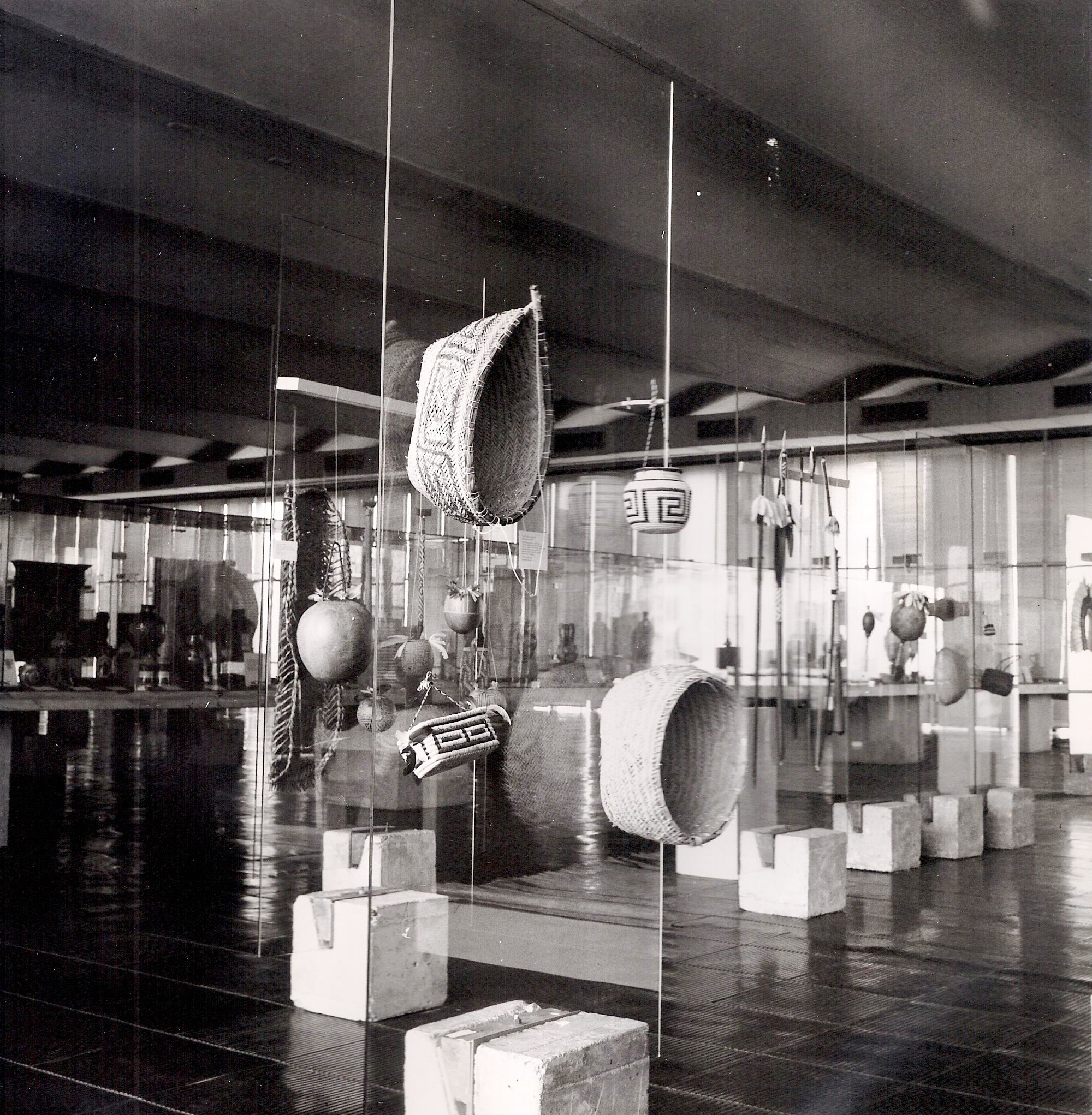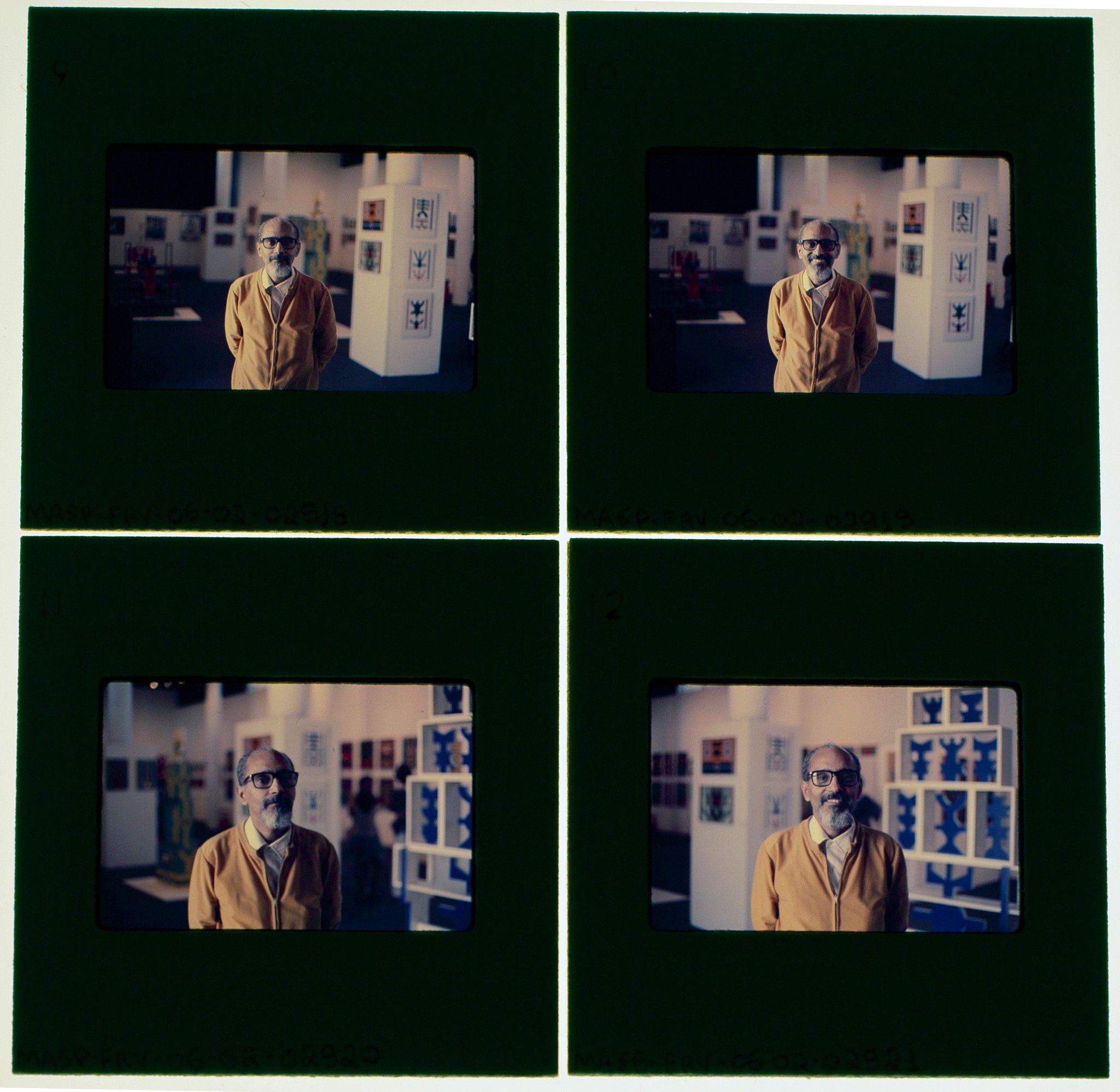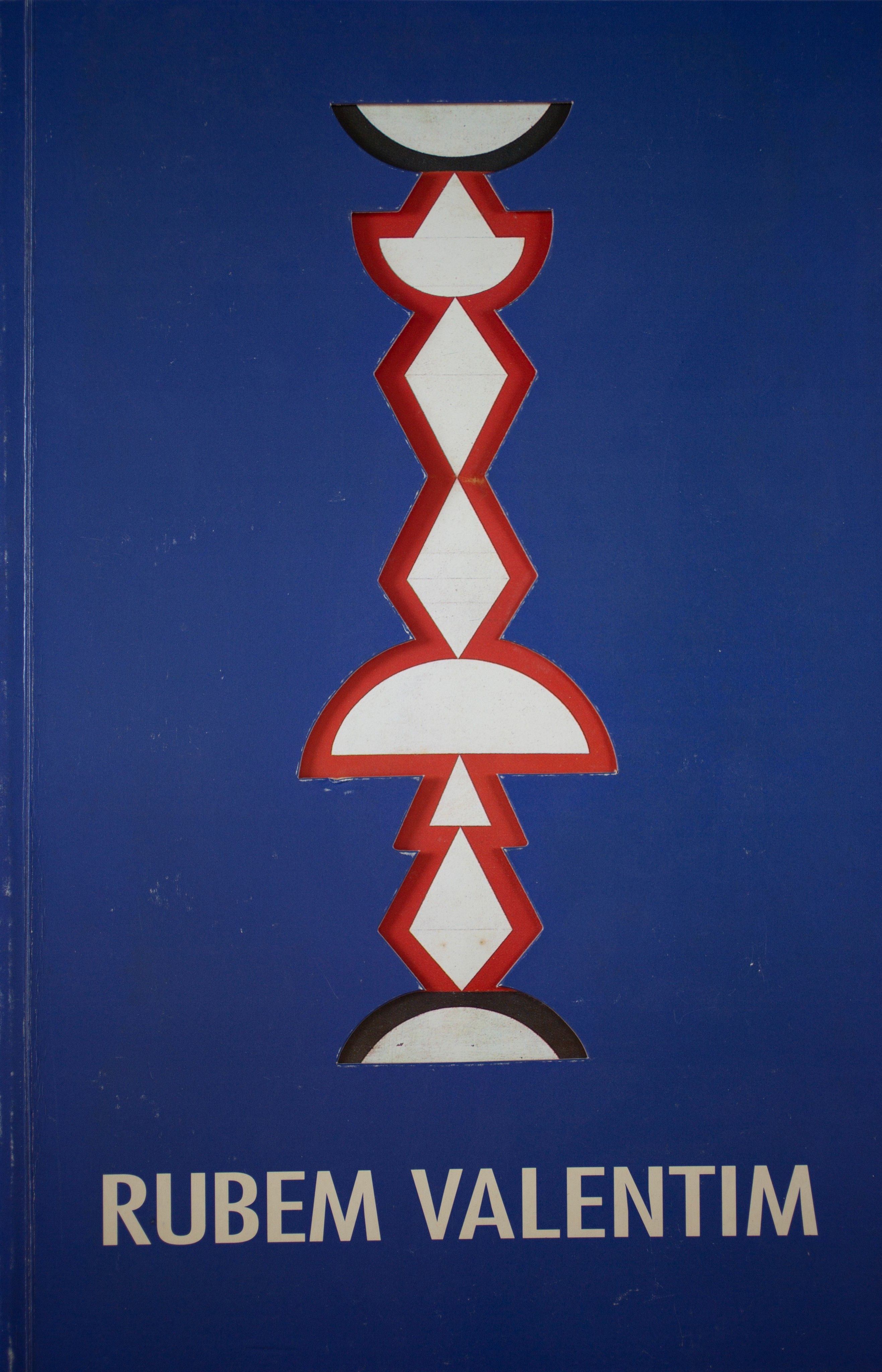Service
The Research Center supports researchers by appointment, from Monday to Friday, 1pm to 6pm. To book your appointment, please send an email to centrodepesquisa@masp.org.br.
To consult Rare and Special Works you must present proof of your institutional affiliation and a letter from your institution indicating the purpose of your research.
To consult the bibliographical catalog, please access the Online Catalog.
The Research Center holds one of the main art-related archives in Brazil. Its aim is to preserve and make accessible its publications and documents concerning the museum and the arts.
The department was originally created in the form of the MASP Library for the museum’s 30th anniversary in 1977, when Lina Bo Bardi (1914-1992) and Pietro Maria Bardi (1900-1999) donated their book collection to the museum. In the 1990s, the department expanded its activities by incorporating the documents concerning the museum’s program. Subsequently, from 2017, in line with a new understanding about its role, the initiative was named the Research Center.
The bibliographical archive contains more than 70 thousand publications, including rare and special works, museum and exhibition catalogs, zines, dictionaries, theses and periodicals on the themes of art, architecture, design, fashion, aesthetics, and history.
Amongst national and international periodicals, the highlights are O Cruzeiro, Habitat, Mirante das Artes, Gazette des Beaux Arts, ArtForum and Frieze. Additionally, it also holds the museum’s publications, which include exhibition catalogs, books, and anthologies.
The archival collection also contains all institutional documentation that records the creation of the museum, the setting up of its collection, the construction of the building on Paulista Avenue, and the organization of exhibitions, amongst other activities. It also comprises different types of records, such as written documents (letters, exhibition proposals, texts and articles, notes, and newspaper cuttings, amongst others), visual documents (exhibition and event posters, photographs, slides, and negatives), audiovisual and digital documents, amongst others.
As well as the documentation produced by MASP, the Research Center also comprises the Reference Archive, which contains dossiers on national and international artists, cultural entities and art movements, with its own Individual Fonds and Collections.
CMPC believes in the transformative power of art. As such, we support several cultural initiatives, such as the MASP Research Center, which contributes towards the preservation of rare books and materials, creating an ideal environment for the conservation of the memory of several authors and the public’s access to such works.
Clique em Pesquise Aqui para realizar pesquisas no acervo bibliográfico e no Vocabulário Controlado de Artes do MASP.
O acervo bibliográfico segue o arranjo inicial do núcleo doado pelo casal Bardi e é dividido pelas coleções: publicações do MASP, obras raras e especiais; publicações periódicas; catálogos de exposições; livros, guias e catálogos de museus; coleções de artistas. O Vocabulário Controlado de Artes e o Controle de Autoridades foram elaborados na década de 1990 e, atualmente, passam por um novo processo de revisão e atualização.
Art collectors Adolpho Leirner (São Paulo, Brazil, 1935) and Fúlvia Leirner began their collection in the mid-1960s with the acquisition of abstract-geometric tapestries, and, since then, they have put together a significant art collection, mostly comprised of Brazilian artists whose works have influenced Brazilian designers, as well as furniture and tapestry, amongst others. Since its inception, the Leirners’ Collection has been loaned to several national and international institutions, and the works have featured in many group shows on Brazilian concretism.
The Fúlvia and Adolpho Leirner Archive is mainly comprised of information that documents the relationship between the collectors and MASP, such as documents about loaning the works to exhibitions, newspaper and magazine cuttings, letters exchanged with Pietro Maria Bardi, and other personalities linked to the art milieu, as well as photographs and design and architecture publications.
The donation was made by Fúlvia and Adolpho Leirner in 2016.
Total: approximately 400 items.
Maria Auxiliadora da Silva (Campo Belo, Brazil, 1935 - São Paulo, Brazil, 1974) is a self-taught artist who developed her own painting technique and a unique practice. Part of a family of artists, alongside her mother, the sculptor Maria Almeida da Silva, she was a member of the Embu group (Embu das Artes, São Paulo), composed mainly of Black artists who worked with Afro-Brazilian themes. She exhibited her works at Praça da República, in São Paulo city center, and in solo exhibitions. Her prize-winning works featured in national and international group shows and art salons.
The Maria Auxiliadora Archive brings together documents concerning her artistic career, such as invitations, folders, exhibition catalogs, newspaper cuttings, photographs showing the artist with her works and friends and family, and records of her participation in exhibitions and events, amongst others.
The archive was donated by the artist’s family in 2019.
Total: 110 items
Rubem Valentim (Salvador, Brazil, 1922 - São Paulo, Brazil, 1991) worked as a visual artist and university professor. He graduated from the University of Bahia with a degree in dentistry in 1946, but opted for a career as an artist, joining the modernist movement in his home state. He attended the School of Fine Arts and completed a journalism course at Bahia School of Philosophy, which contributed to his critical development and the creation of a unique visual language drawing on the incorporation of Afro-Brazilian religious symbols. He lived in Rio de Janeiro, Bristol (UK), Rome (Italy), São Paulo and Brasília, where he taught at the University of Brasília. He was part of several art salons and national and international exhibitions, becoming a well-known and prize-winning artist. His artistic and intellectual practice reveals his efforts towards the recognition and appreciation of popular art and of Brazilian culture’s African roots.
The collection is made up of personal documents and records of Valentim’s artistic, intellectual and academic career. It brings together approximately 3,842 written documents (manuscripts, notes, machine-typed articles, letters, contracts, diplomas, and newspaper cuttings, amongst others); 14 sketchbooks and drawings; 6,984 visual documents (photographs, negatives, and slides that document moments of his personal life, studio work, exhibitions and works); 65 audiovisual items, including recordings of interviews and statements; and a bibliographical collection comprising 91 items (catalogs and books on Brazilian art, African art and African religions).
The donation was made by Instituto Rubem Valentim in 2019.
Total: approximately 11,000 items
Paulo Pires (Franca, Brazil, 1928 – São Carlos, Brazil, 2015) was a renowned photographer who won awards both in national and international photography salons, and was one of the founders of the group Íris Foto Grupo. The archive contains written texts, such as letters, manuscripts and texts machine-typed by the author, as well as documents of his participation and awards in photography salons and competitions. Additionally, the archive holds a collection of photography magazines, in particular Fotoarte, Fotocine bulletins and photography salon catalogs.
The documents were donated by the photographer’s son, Eduardo Pires, in 2021 and 2022.
Total: 1,883 items
Adélia Borges graduated with a degree in journalism and worked for the country’s main media channels, such as Folha de São Paulo, Estado de São Paulo, TV Globo, and TV Cultura, amongst others. Specializing in design, she is an art researcher, curator and writer.
The collection brings together newspaper, magazine and alternative periodical cuttings, with articles on the condition of women and the feminist cause that were published in Brazil and in other Latin American and European countries in the 1970s and 1980s. This donation supplements the materials acquired and produced during the cycle Histories of Women, Feminist Histories, which consisted of exhibitions, workshops, seminars, lectures and publications.
The donation was made by the curator herself in 2019.
Total: 142 items
The Italian designer, architect, and painter Roberto Sambonet (Vercelli, 1924–Milan, 1995) contributed actively in the early years of MASP (1948–1953). Besides taking part in the actions of the Instituto de Arte Contemporânea [Institute of Contemporary Art] in the 1950s, he authored the first poster advertising the Museum’s activities in 1948. The collection of historic posters of MASP exhibitions is available for consultation by appointment.
The project called “Preservation and Dissemination of Historical Images of MASP Exhibitions by Photographer Luiz Sadaki Hossaka”, financed by Proac public notice 02/2014 for the Preservation of Museum Collections, has been working on the preservation, conservation, cataloguing and digitization of approximately 27,000 images. These are negatives, slides, photoliths, and photographic enlargements that record museum activities, such as exhibitions, events, artworks and the everyday life of the museum, forming a wealth of historical information about MASP.
Luiz Hossaka studied at the Institute of Contemporary Art, an art training center based at MASP, in the 1950s. Subsequently, he became part of the museum team, working for more than 50 years in different roles and functions, including photographer. He was a pioneer in the photography of artworks and trained many photographers in this practice, which was, until then, low knowledge in the field.
The project’s aim has been to safeguard the museum and the photographer’s legacy, acknowledging and promoting the significance of his work.



Developed in partnership with the Department of Library Science and Documentation of the School of Communications and Art of the University of São Paulo (ECA/USP), the project named "Development and Dissemination of Support Tools for the Documentation of Art” has made available a new version of the MASP Controlled Art Vocabulary. The project was financed by the Public Policy Research Program of the São Paulo Research Foundation (FAPESP).
The first phase, developed between 2008 and 2009, was coordinated by Professor Maria Christina Barbosa de Almeida (ECA/USP), making the first online version of the MASP Controlled Art Vocabulary available for consultation. In the second phase, which began in 2013 under the coordination of Professor Vânia Mara Alves Lima (ECA/USP), the Controlled Vocabulary went through extensive terminological research and updates.
The project began in 2019, with the activation of preventive conservation and documental treatment procedures with the aim of promoting access to the documentation and its effective preservation.
Due to the Covid 19 pandemic, the works were interrupted in 2020 and resumed in 2022, when MASP offered the Rubem Valentim Grant, as part of the MASP Research Program, as a way of encouraging the study of the artist’s oeuvre, drawing on the documentation kept by the museum’s Research Center.
Due to the diversity of document genres (written, visual, audiovisual and bibliographical), researchers and technicians have been guiding the choice of suitable materials, cleaning methods and temperature conditions. The documental approach aims to understand the context of the production of the documents and to maintain the organic nature of the collection through the development of an overall framework.


